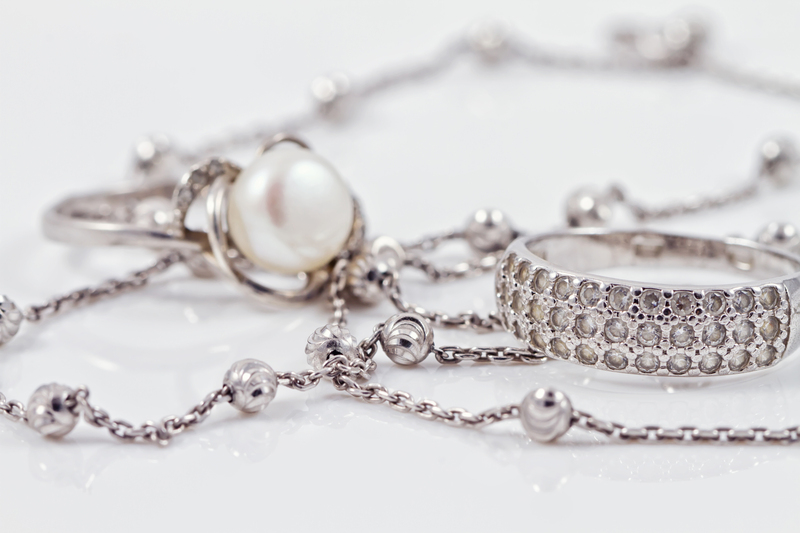Secure Your Sofa's Quality: Long-Term Storage Tips from Experts
Posted on 17/05/2025
Secure Your Sofa's Quality: Long-Term Storage Tips from Experts
When life calls for you to stow away your beloved couch--whether it's due to a renovation, a move, or simply decluttering--securing your sofa's quality during long-term storage is crucial. Sofas are often a sizable investment, and improper storage can cause irreversible damage to their fabric, structure, and overall comfort. How do you ensure that your sofa remains in pristine condition during extended periods of storage? We asked experts and have compiled this comprehensive guide to help you keep your couch safe, clean, and ready for use at any time.

Why Properly Storing Your Sofa Matters
Most families spend hours lounging, entertaining, or even napping on their favorite sofa. As a centerpiece in many living spaces, it deserves care throughout its lifetime--even when not in use. Long-term sofa storage poses risks like mold, mildew, fading, or warping. But with the right preparation and strategy, you can easily protect your sofa's quality.
- Financial Protection: An average sofa costs hundreds or thousands of dollars. Proper storage prevents costly replacements or repairs.
- Sentimental Value: Your sofa might be irreplaceable for sentimental reasons; storing it well ensures it remains part of your home for years to come.
- Reduced Environmental Impact: Extending the life of your furniture means less waste in landfills.
Preparing Your Sofa for Long-Term Storage
Step 1: Clean Thoroughly
Never store a dirty sofa. Dirt, crumbs, body oils, and pet dander can stain and attract pests. Begin your sofa storage preparation with an exhaustive cleaning process:
- Vacuum all surfaces, including underneath cushions and in crevices.
- If fabric allows, steam clean or shampoo the upholstery. Let it dry completely to avoid mold growth.
- For leather sofas, wipe with a damp cloth and apply a leather conditioner to prevent drying and cracking.
Step 2: Disassemble When Possible
Large or sectional sofas often have removable legs, backs, arms, or cushions. Disassembling your sofa makes transportation and storage easier while reducing the risk of damage.
- Remove detachable parts and keep all hardware in labeled bags.
- Store cushions separately to prevent warping and to maintain cushion shape.
- Wrap small parts and label them clearly to avoid confusion during reassembly.
Step 3: Wrap for Protection
Proper wrapping will secure your sofa's quality during long-term storage by shielding it from dirt, dust, moisture, and pests.
- Wrap your sofa with breathable moving blankets or covers; plastic wrap can trap moisture and cause mildew.
- Use sheets or specialized fabric covers for added ventilation and softness.
- Seal the bottom with a dust cover to keep out insects and debris, but avoid creating an airtight seal.
Choosing the Right Storage Environment
The storage environment greatly impacts how well your sofa withstands time. Expert sofa storage advice centers on three key factors: climate, security, and space.
Climate-Controlled Storage Units
Maintaining a stable environment is vital. Extreme temperatures cause wood frames to expand or contract, while humidity may encourage mold and mildew growth.
- Opt for climate-controlled units that maintain consistent temperature and humidity levels.
- If using a garage or attic, be aware of fluctuating conditions and take extra steps to add protection (desiccant packs, dehumidifiers).
Space Matters: Avoid Cramming
Choosing a unit with ample space is about more than convenience; it prevents crushing and warping.
- Never stack heavy boxes or other furniture on top of the sofa.
- Ensure your sofa stands on its feet--avoid placing it directly on concrete floors. Use wooden pallets or risers for air circulation.
- Allow enough space to walk around and check on your sofa regularly.
Security Considerations
A secure storage unit reduces the risk of theft and vandalism--important for high-end or vintage sofas.
- Choose facilities with gated access, cameras, and strong locks.
- Ask if the facility offers insurance for stored goods; consider supplementing with your own policy if needed.
Pro Tips to Preserve Your Sofa's Integrity
Keep it Elevated
Concrete floors can transfer moisture upward, potentially ruining wooden legs and fabric. Store your couch elevated on pallets to maximize airflow and minimize mold risk.
Avoid Direct Sunlight
UV rays can fade fabric and dry out leather. Place your sofa away from windows or cover storage unit windows with curtains or cardboard.
Dealing with Leather Sofas
Leather is luxurious but sensitive. For long-term leather sofa storage:
- Keep the humidity between 35% and 55% to prevent cracking or mustiness.
- Apply a quality conditioner before storage and once every few months if possible.
- Avoid tight plastic coverings; leather needs to "breathe".
Pest Prevention
One of the main threats to your upholstery during storage is unwanted pests. Sofa storage experts recommend these precautions:
- Check your storage unit and sofa for signs of pests before storing.
- Use natural pest repellents--cedar blocks, lavender sachets, or peppermint oil pads.
- Never store food items or plants near your sofa.
FAQs: Expert Answers for Long-Term Sofa Storage
How long can you safely store a sofa?
With ideal preparation, climate control, and regular checks, you can safely store your sofa for several years. However, most experts suggest a maximum of 1-2 years without interim use or airing out.
How often should you check your stored sofa?
It's best to inspect your sofa every few months. Look for signs of dust, pests, moisture, or wrapping shifting. Regular checks will help you address issues before they become severe.
Can you store a sofa vertically to save space?
Never store a sofa standing upright for extended periods. This can warp frames and flatten cushions. Always store it in its normal, horizontal position.
Is it okay to use plastic wrap?
While plastic is useful for some short-term storage situations, it can trap condensation and encourage mold over the long term. Use breathable furniture covers whenever possible.
Should you remove sofa feet during storage?
If removable, it's a good idea to take sofa legs off and wrap them separately--especially if they're ornate or protruding. This minimizes breakage risk and makes moving less cumbersome.
Common Sofa Storage Mistakes to Avoid
- Storing it dirty. Fabric and leather absorb stains and smells over time; clean thoroughly first.
- Wrapping too tightly or with only plastic. Lack of air flow can ruin upholstery.
- Ignoring humidity levels. Both excessive dryness and moisture are harmful.
- Resting directly on concrete. This invites mold and pests; always elevate.
- Stacking objects on top. This leads to indentations and broken springs.
- Neglecting regular inspections. Early action is key to preserving your sofa's integrity.
Moving Your Sofa into Storage: Step-by-Step Guide
- Clean and dry every surface thoroughly.
- Detach removable parts and wrap them separately; label everything.
- Choose high-quality, breathable covers for protection.
- Elevate on pallets and allow enough space around the piece.
- Keep out of direct sunlight and away from walls to improve airflow.
- Visit periodically to check and maintain your sofa's quality.
Alternative Sofa Storage Methods
If professional storage units are not an option, consider these expert tips for storing sofas at home:
- Garage or Basement Storage: Use a dehumidifier, elevate your sofa, and ensure proper ventilation.
- Indoor Storage: A rarely used room can work. Use furniture covers and keep the area dust-free.
- Self-Storage Enclosures: Portable, climate-controlled containers delivered to your property are a convenient, protective option.
Short-Term vs. Long-Term Storage
Short-term storage is less risky but follow all cleaning and wrapping guidelines regardless of duration. The longer the sofa is out of use, the more meticulous you need to be about maintaining its quality.

Expert Advice for Unpacking and Reintegrating Your Sofa
- Upon removal, air out your sofa for 12-24 hours to dissipate any stored odors.
- Check for damage, mold, or pests and address immediately.
- Refresh fabric or leather with appropriate cleaners and conditioners.
- Reassemble carefully, referencing any labeled parts and photos taken beforehand.
- Let cushions regain their shape before heavy use.
Conclusion: Long-Term Sofa Storage Made Easy
The key to securing your sofa's quality in long-term storage is a combination of thorough cleaning, thoughtful wrapping, climate-appropriate storage, and regular check-ins. By following expert-recommended sofa storage tips, you'll preserve the value, appearance, and comfort of your couch for years to come. Whether you're storing modern sectionals or vintage settees, invest in preparation--your future self (and your living room) will thank you for taking these measures today.
Don't risk your sofa's quality--use these expert storage solutions for peace of mind and a flawless, ready-to-use sofa when you retrieve it!

 request quote
request quote


